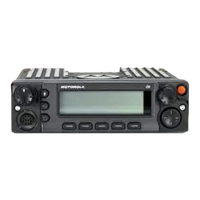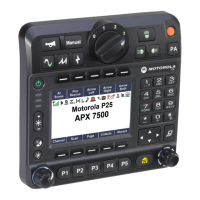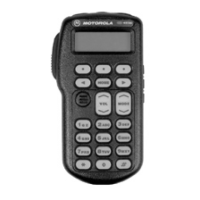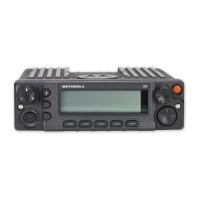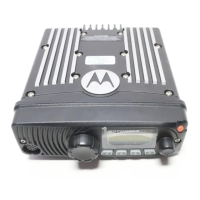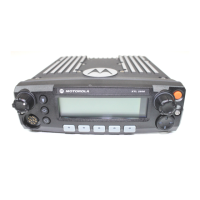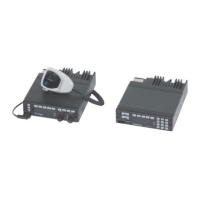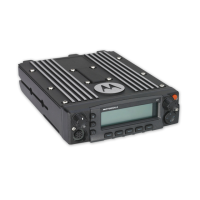6881096C77-O September 26, 2003
Theory of Operation: W9 Control Head 3-9
• Volume level
•Status codes
• Message codes
• Telephone numbers
• Identification numbers
• Alarm displays
• Option status
3.3.2 W9 Controls and Indicators
The W9 control head 12-button keypad contains traditional alphanumeric keys. These keys double
as function keys for options. Six ON/OFF option buttons and indicator lights above the display
window tell whether these options are on or off. All buttons are backlit to allow operation in low-light
conditions.
Other indicators include BUSY, XMIT, Pri, and Non-Pri. The BUSY indicator lights when activity is
detected on the channel. The XMIT (transmit) indicator lights when you are transmitting. The Non-Pri
(non-priority) or Pri (priority) indicators light when activity occurs during scanning. If the detected
activity is in the non-priority mode, the Non-Pri indicator lights. If the activity is in the priority mode,
the Pri indicator lights (steady on for second priority mode, and flashing for first priority mode).
3.3.3 Control Board
NOTE: Refer to the W9 control head foldout block diagram and schematic diagram for the following
discussion.
The control board's microprocessor unit (MPU) communicates on the serial bus, receives and
interprets keypad data, and controls the volume. The MPU (U2) sends data to a driver to control the
display and sends data to turn the LEDs on or off. The control board has a watchdog timer that
senses the need for a system reset. The vehicle interface ports are also controlled on this board.
3.3.3.1 Microprocessor
The MPU operates in expanded bus mode with internal Read-Only Memory (ROM) active. The clock
frequency is 7.9488 MHz, which results in an internal operating frequency of 1987 kHz. The limited
number of I/O ports is augmented by using a serial-to-parallel shift register (U6) to scan the keypad
and to switch the VIP drivers Q71, Q72, and Q73.
3.3.3.2 Watchdog Timer
The watchdog timer is on the serial input/output integrated circuit (SIOIC) U4. On system power-up,
capacitor C6 pulls U4, pin 43, high while the RESET output at pin 4 goes low, and the
microprocessor resets.
As C6 charges, the voltage on U4, pin 43, drops, causing the output to go high and the
microprocessor to start operating. At this point, the bias on U4, pin 43, shifts toward positive, causing
the voltage to begin to rise, eventually causing another reset cycle. A high on U4, pin 9, (RESET
input) also initiates a reset.
When the microprocessor operates correctly, the microprocessor sends "tickle" pulses to U4-2.
These pulses tickle the watchdog timer and keep the voltage on U4, pin 43, low enough to prevent
reset. If the tickle pulses stop for more than 250 ms, the reset cycle repeats.
The watchdog timer can be disabled by shorting U4, pin 43, to ground.
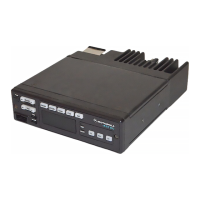
